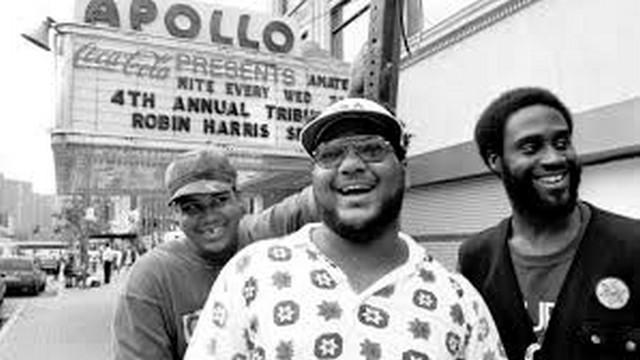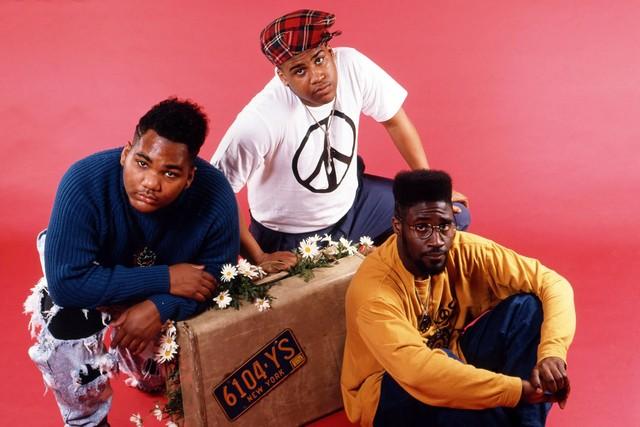
In an era when rap was barbed wire and bravado — when hard edges were the soundtrack of survival — a trio from Long Island stepped into the light and refused to be shadowed. De La Soul arrived with daisies, with geometry, with color. They offered something different: introspection, warmth, playful intelligence, and a refusal of shame in pursuit of pleasure and possibility.
The Flower Blooms: Origins & DAISY Age
Kelvin “Posdnuos” Mercer, David “Trugoy the Dove” Jolicoeur, and Vincent “Maseo” Mason met in high school. From those early friendships came “Plug Tunin’,” a demo that caught the ear of Prince Paul. Under Tommy Boy, they released 3 Feet High and Rising in 1989. It wasn’t just an album; it was a manifesto. Eclectic in its samples — pop, soul, funk, jazz, even cartoons and Saturday morning nostalgia — it marked a departure. The traffic of hardcore gangsta rap, of aggression and hard lines, was heavy then. De La Soul carved out another road: gentler, thoughtful, funny.
Their intention was summed up in an acronym that doubled as a philosophy: D.A.I.S.Y. Age — Da Inner Sound, Y’all. Not hippie fluff, but optimism born out of creativity. It was saying: You can rap about life’s pain and still laugh. You can weave innocence with street wisdom without losing either.
The Music, the Magic
3 Feet High and Rising is lush. It’s built of samples that others might dismiss — overtly joyful, even childlike — but there’s craft in those choices. The Magic Number borrows from Schoolhouse Rock; Eye Know dips into Steely Dan’s “Peg,” Lee Dorsey, Otis Redding and more; “Say No Go” rides the hook of Hall & Oates.
But it isn’t just what they sampled — it’s how they stitched it. The skits between tracks, absurdist, whimsical, like interstitial glimmers that ease you into the next moment. The textures: pitched vocals, shifting rhythms, playful loops, the unexpected reference. They were experimenting at scale, and they made it feel intimate.
Shadows Among the Petals
Not everything remained forever sunlit. De La Soul Is Dead arrived in 1991, darker, more cynical in parts. The broken flower pot cover, the tone — it was a reckoning. The brightness had to contend with hard truths.
And then came the legal battles. Sampling, once a joyful collage, became a minefield. Their early material, beloved and influential, was hard to stream for decades because of sample-clearance issues and disputes over rights. Their work felt partially invisible, as though someone had erased the daisies.
When 3 Feet High and Rising finally landed on streaming platforms on March 3, 2023 — just after Trugoy’s passing — it felt like reclamation. Not just of music, but of presence. Of what it means to have art persist, even when it’s unavailable.
Legacy & Light
De La Soul’s story is a weaving of contrast: joy and shadow, innocence and experience, eccentricity and gravity. They influenced not just rap but the way artists might imagine possibilities: rap that friends share in bedrooms, that families listen to over dinner, that consoles when school doesn’t feel right. For many, 3 Feet High and Rising was that first love: the record memorised, recited, the soundtrack of misfits, of children wondering what else might be true.
Their place in the Native Tongues collective anchored them among peers who similarly believed hip-hop could be more than fight or flight: A Tribe Called Quest, Jungle Brothers, others. But De La Soul stood, and still stands, because they made space — for softness, for depth, for laughter, for the long view.
“Painted Straight on to the Wall”
One memory illustrates something central: when music becomes more than sound. When it becomes mural, wallpaper of memory, a marker. A young fan’s dad once painted “DAISY” on her bedroom wall when she was twelve, surrounded by daisies. A gesture of support, of allowing a child’s joy. A way of saying yes.
For all their artistry, De La Soul’s greatest impact might simply be that they said yes. To odd ideas, to soft moments, to curiosities. They let themselves and their listeners believe in alternative realities: rap that smiles, that questions, that dreams. And when so many others were shouting, De La Soul whispered, chuckled, stretched, painted — and made space.
If 3 Feet High and Rising is their high water mark — and many believe it is — it’s not because later work failed, but because that debut crystallised who they were: fearless, tender, inventive. In today’s world, where sample clearance, streaming, rights, loss, and absence shadow legacies, De La Soul reminds us that art persists beyond obstacles, that voice matters, that memory counts.
What Remains
-
The joy in unexpected samples and playful interludes, the possibility that a reference to a cartoon or a Saturday morning show or a dad’s record collection matters.
-
The courage to shift tone: to hold both light and dark in view.
-
The persistence to ensure your art survives not just in memory but in access — in streaming, in the long haul.
De La Soul didn’t just drop daisies — they planted seeds. Many of those seeds have grown into what we now take for granted: rap that bends form, that embraces vulnerability, that trusts its audience. And perhaps more importantly, they taught us that to tell truth, you don’t always have to scream. Sometimes, whispering is enough.



